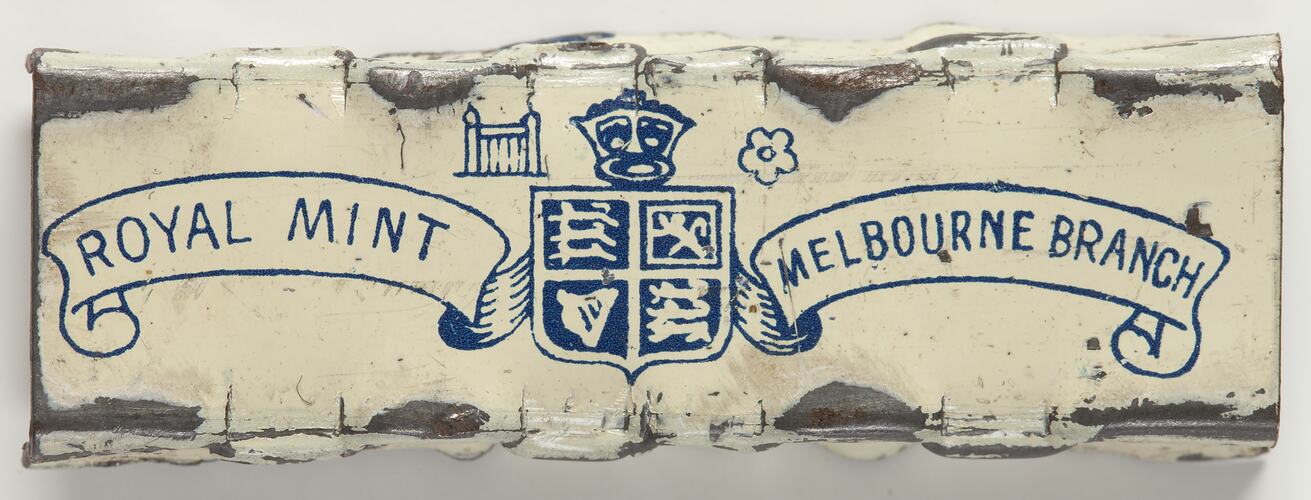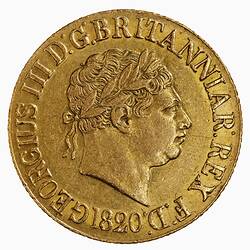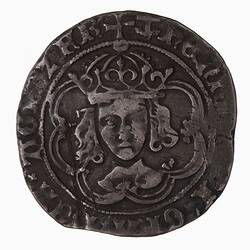The discovery of gold in the Australian colonies of New South Wales and Victoria in 1851 created the next challenge for the Royal Mint. Both colonies were operating with British coins including the gold sovereign. The gold that was being found had to be sent to the Royal Mint in London to be struck into sovereigns and then returned. This was expensive both for freight and insurance and took at least six months. Powerful lobbies in Sydney and Melbourne fought for the right to strike sovereigns locally and the colonial governments both sent this request to London.
In London it was seen that this was a reasonable request. Sydney was offered the opportunity provided the local government would pay all the associated costs, the new mint would be under British control and the sovereigns bore a Sydney design (so as not to impact on the international renown of the Royal Mint sovereign should anything go wrong). These terms were met in Sydney and the first Branch of the Royal Mint outside Great Britain was established and began producing sovereigns and half-sovereigns in 1855. The first coins were generally based on the designs of the British shilling by William Wyon but in 1857 a new obverse of the Queen by Leonard Charles Wyon was adopted.
In 1870 there was another overhaul of the Royal Mint. The Master of the Mint was to be the Chancellor of the Exchequer and the day to day business the work of a Deputy Master and Comptroller. At this same time Victoria was again pushing for its own mint and pointing to the continuing and large amounts of gold being recovered. Again London offered the local government the opportunity but this time it was decided that the Branch Mints could strike coins of the same design as the Royal Mint; the quality of the coins from the Sydney Mint had never been faulted. Melbourne Mint began production in 1872.
The Australian branch mint products would be indicated by the first letter of the name of the city in which the coin was being struck, S for Sydney and M for Melbourne, being included in the design of the coin. The marks were incorporated when the dies were produced in London - all dies for sovereigns were to be made at the Royal Mint, London.
Once there were two branch mints it was difficult to refuse other reasonable requests; Perth came next in 1899 (mint mark P); Ottawa in 1908 (mint mark C for Canada creating a new tradition); Bombay in 1918 (mint mark I) and Pretoria in 1923 (mint mark SA).
After World War I the production of sovereigns for circulation by the Royal Mint ceased. There was one striking in 1925 but that was to re-strike some worn gold coins held by the Bank of England, the new pieces to go into their vaults. Some years dies dated 1925 were again employed to make sovereigns for the international trade and subsequently sovereigns of that date, once rare for collectors, became common.
The branch mints ceased production as their need for the coin diminished. Sydney was closed in1926 but Melbourne went on striking until 1931 and Pretoria until 1932. Melbourne and Perth continued as branch mints, their main work being the treatment of gold and production of gold bars with contracts from the Australian Government to strike local coins. Royal Proclamations dated 29 May 1970 officially ended the role of Branches of the Royal Mint for Melbourne and Perth mints on 1 July 1970.
The Royal Mint, London oversaw the work of its branches but this usually amounted to including examples of the branches coins in the annual Trial of the Pyx and general housekeeping.
References
The Royal Mint, An Outline History, London 1977
Dyer, G.P. Royal Sovereign 1489-1989, Royal Mint Publications, London 1989
Cooper, Denis R. The Art and Craft of Coinmaking, Spink & Sons, London, 1988
Annual Reports of the Royal Mint
Challis, C. E., A New History of The Royal Mint, Cambridge University Press, 1992 http://www.royalmint.com/Corporate/History/TheRoyalMint/llantrisant.aspx
More Information
-
Keywords
-
Authors
-
Article types





